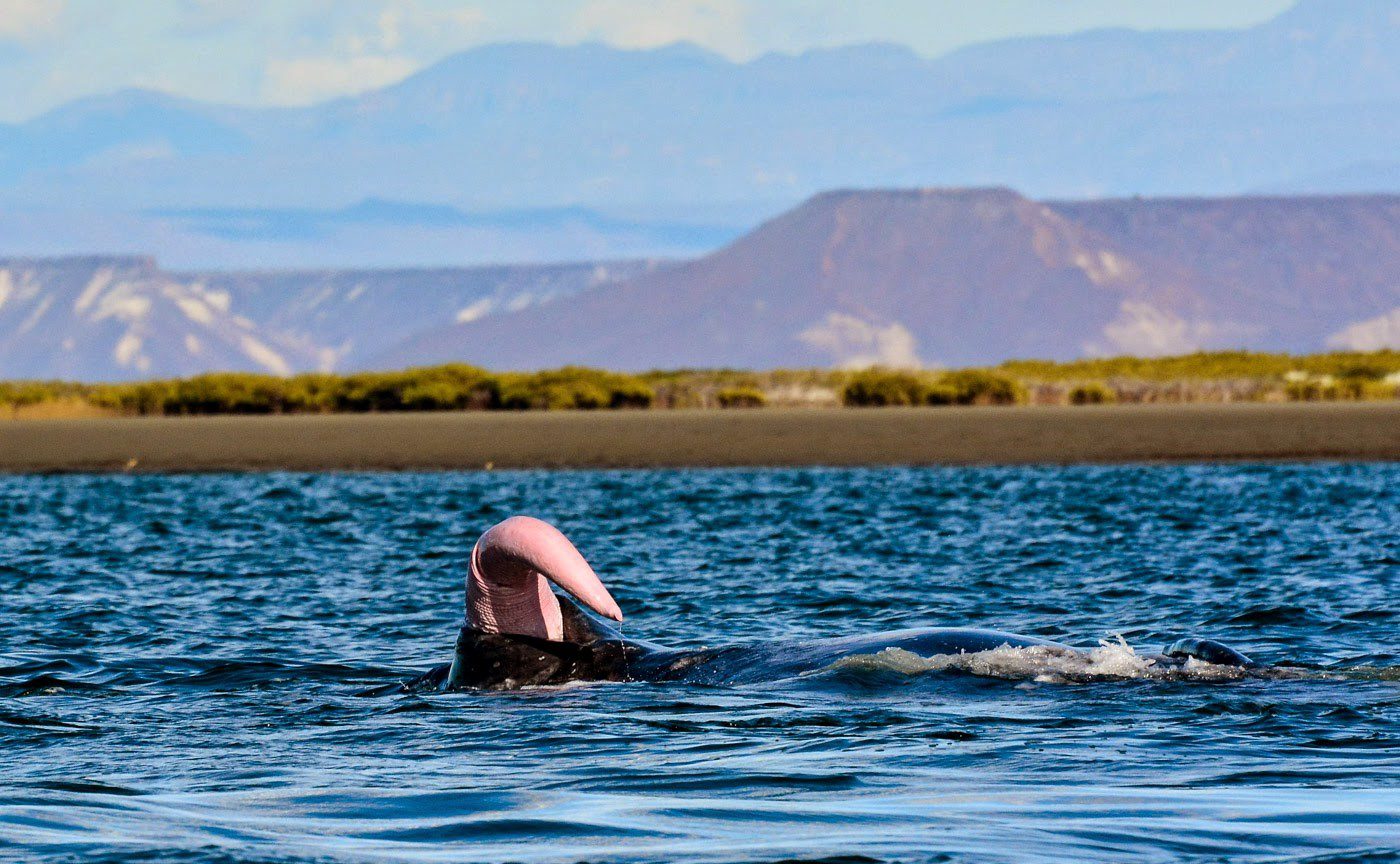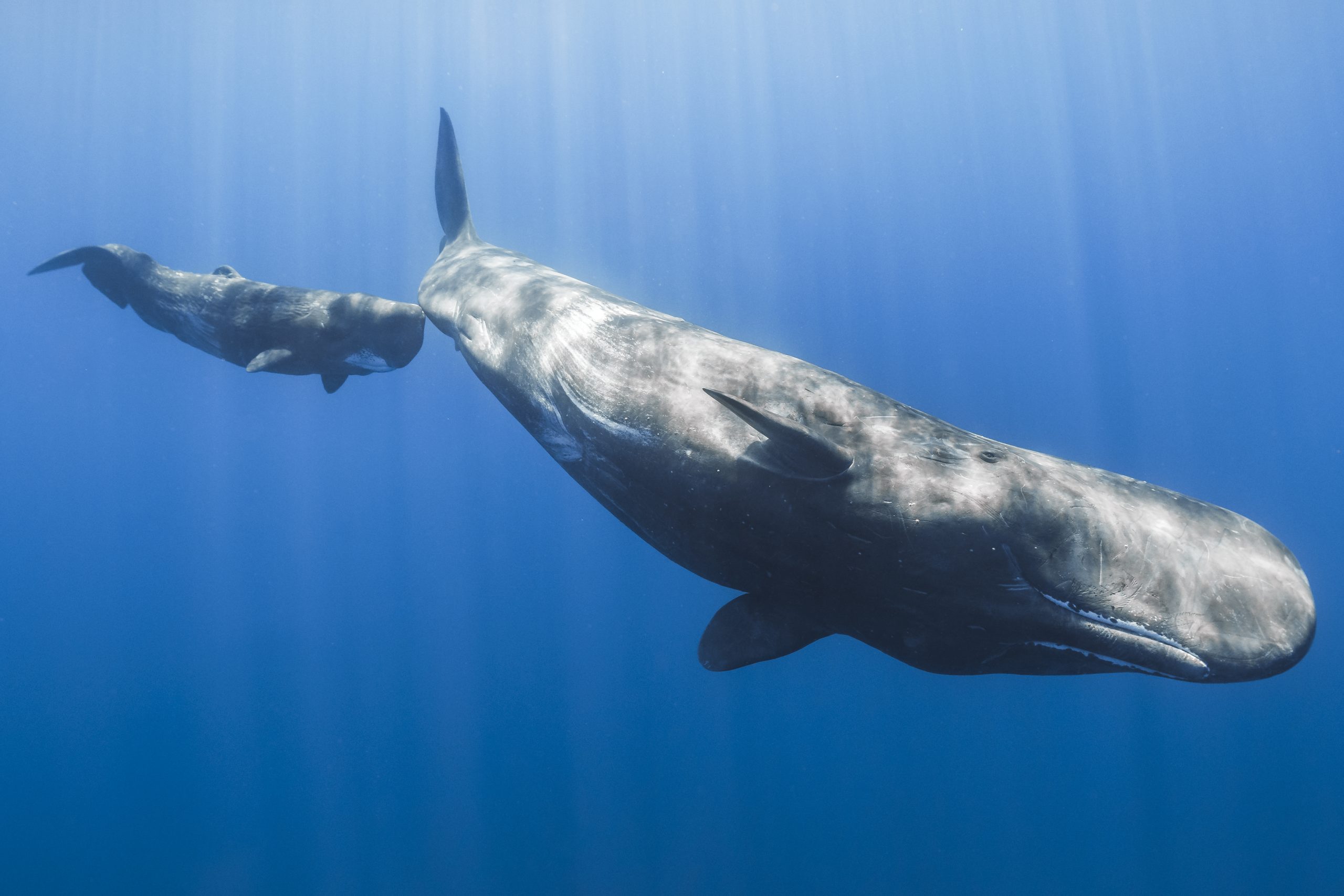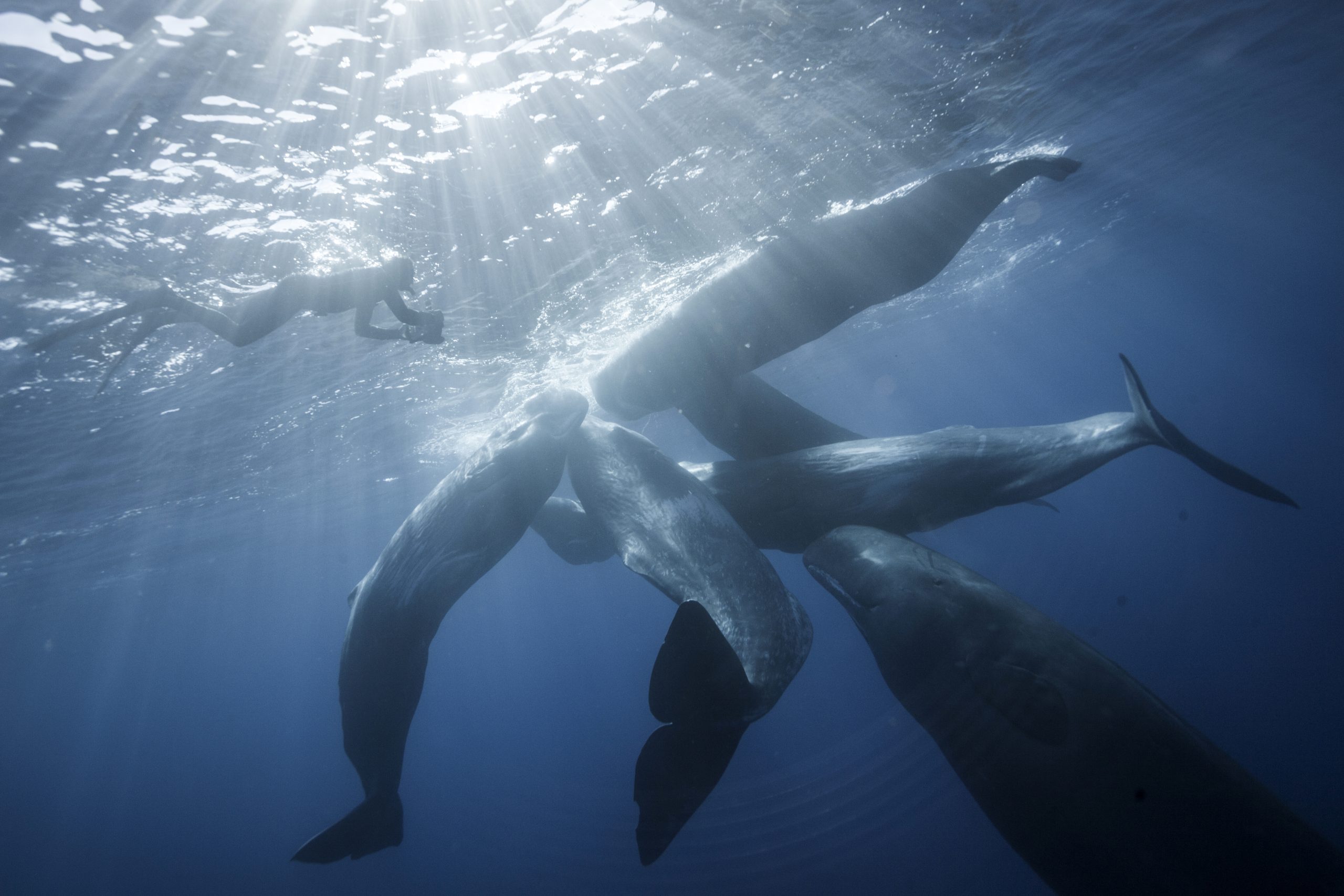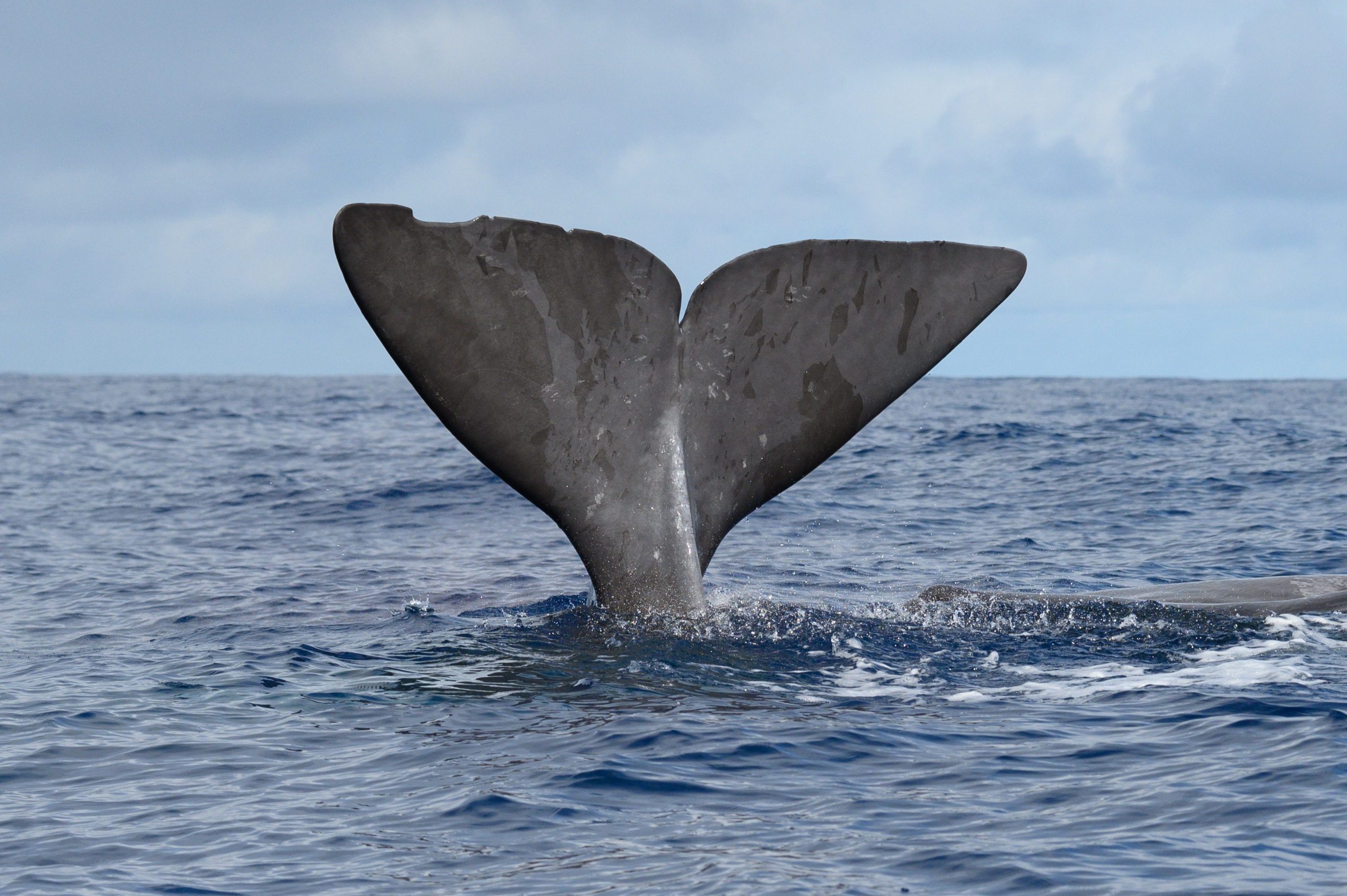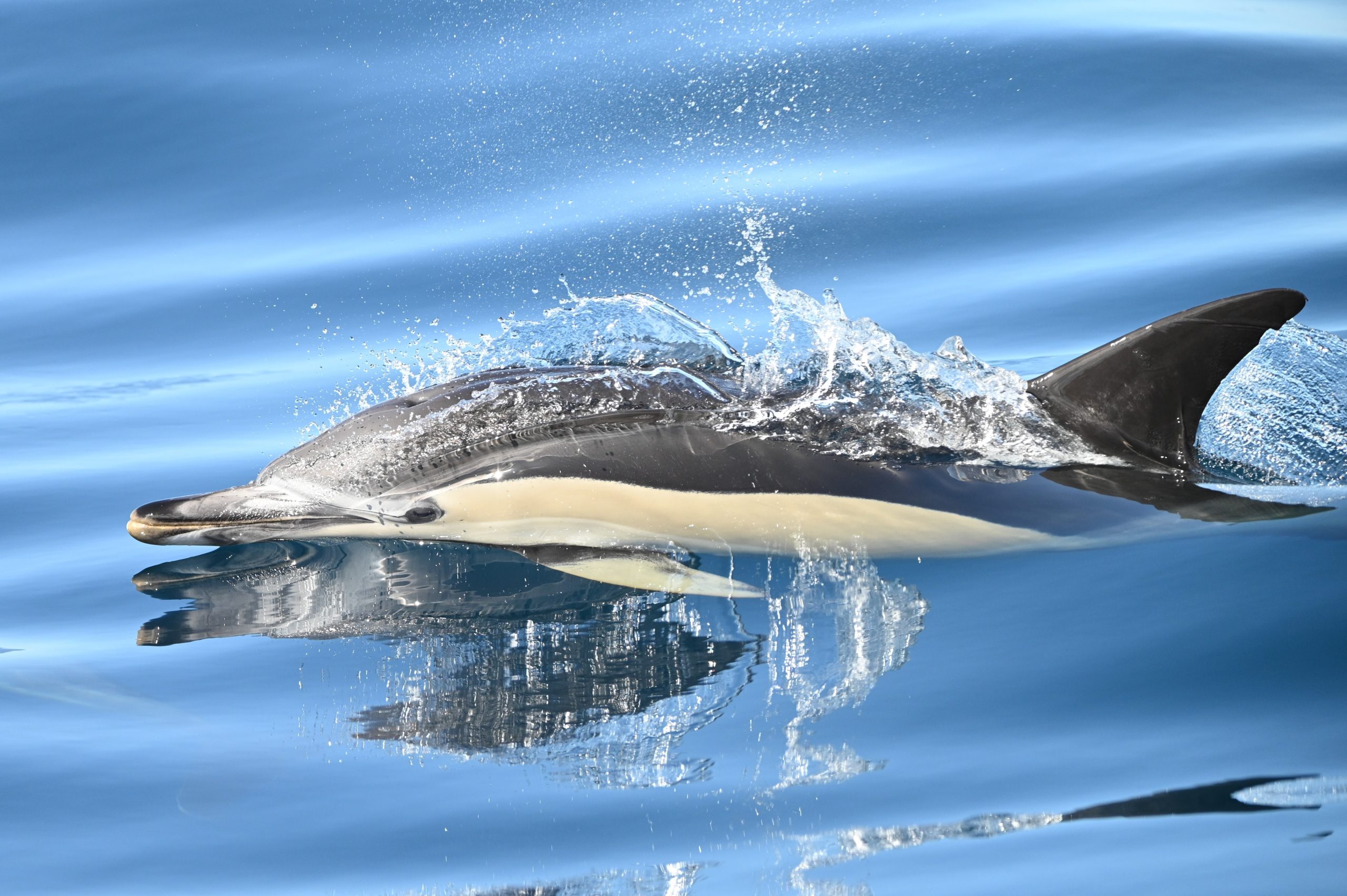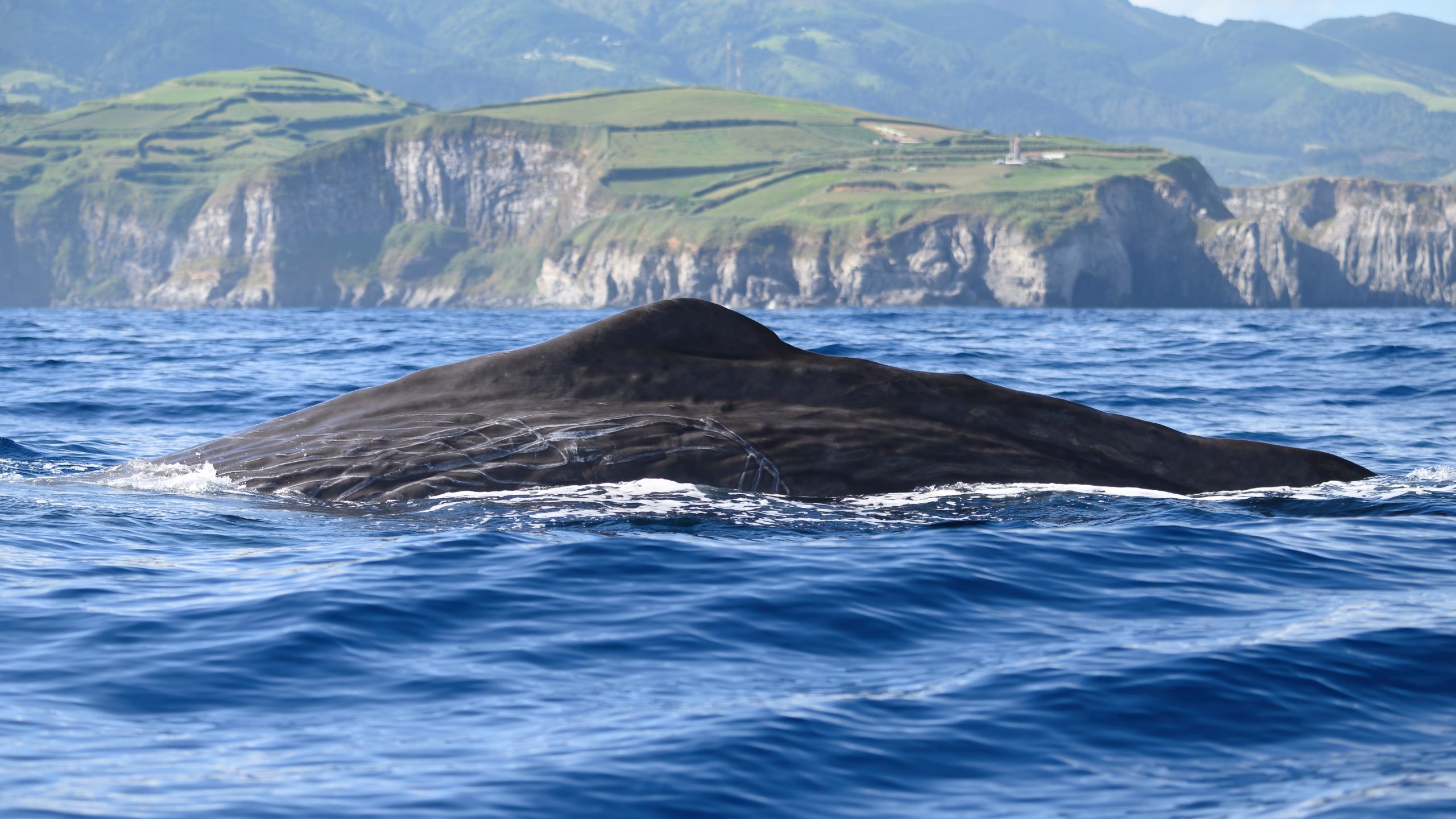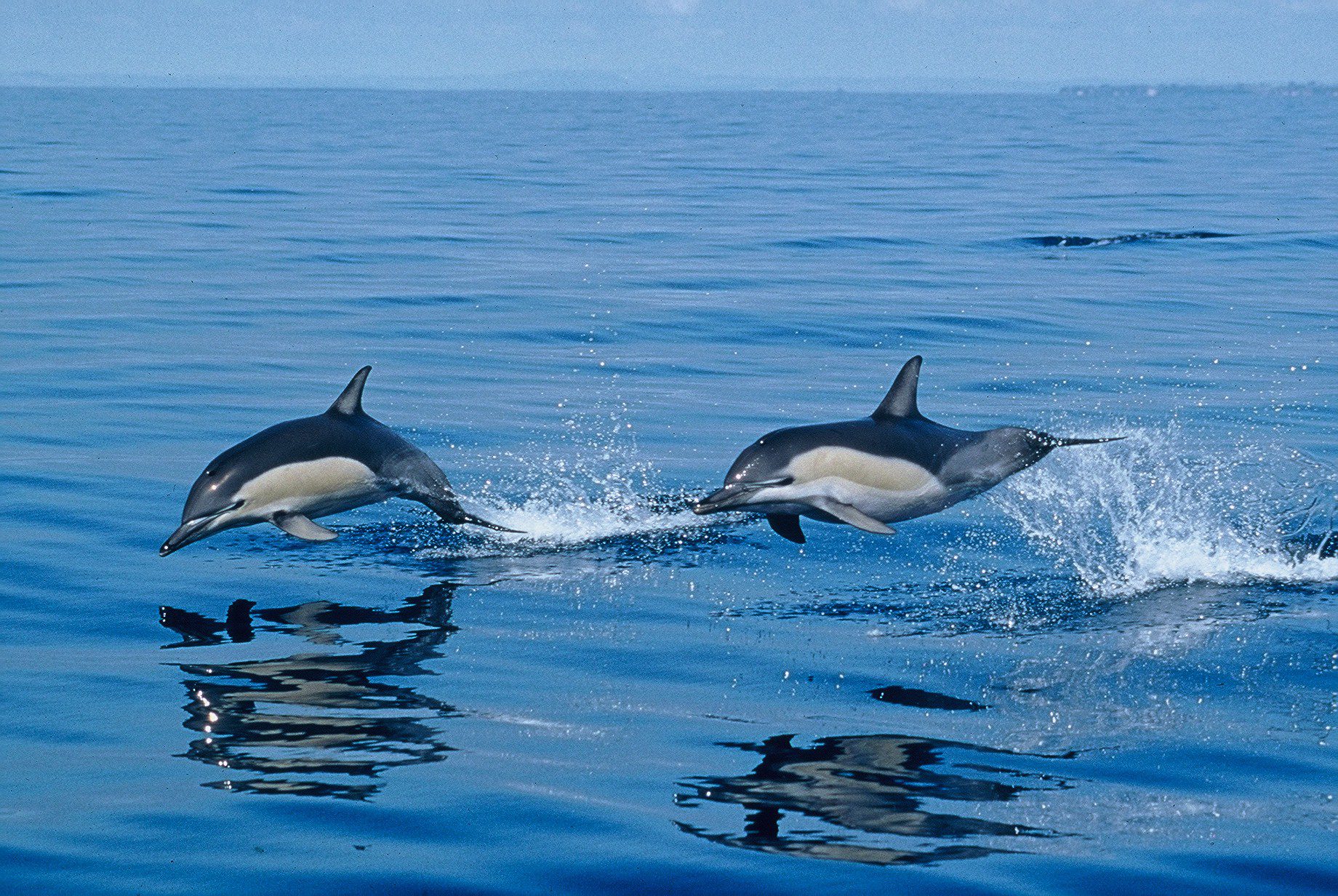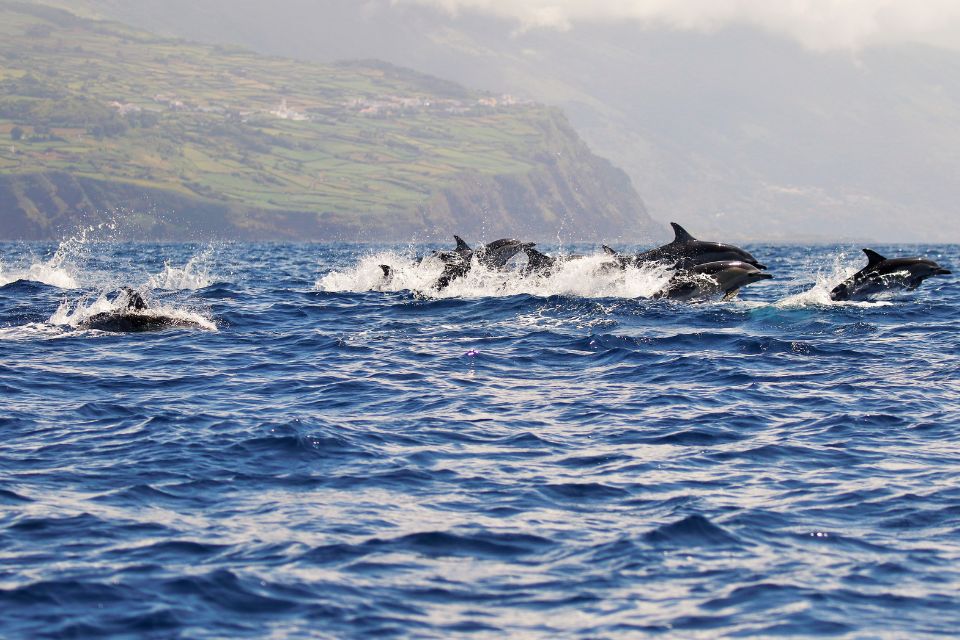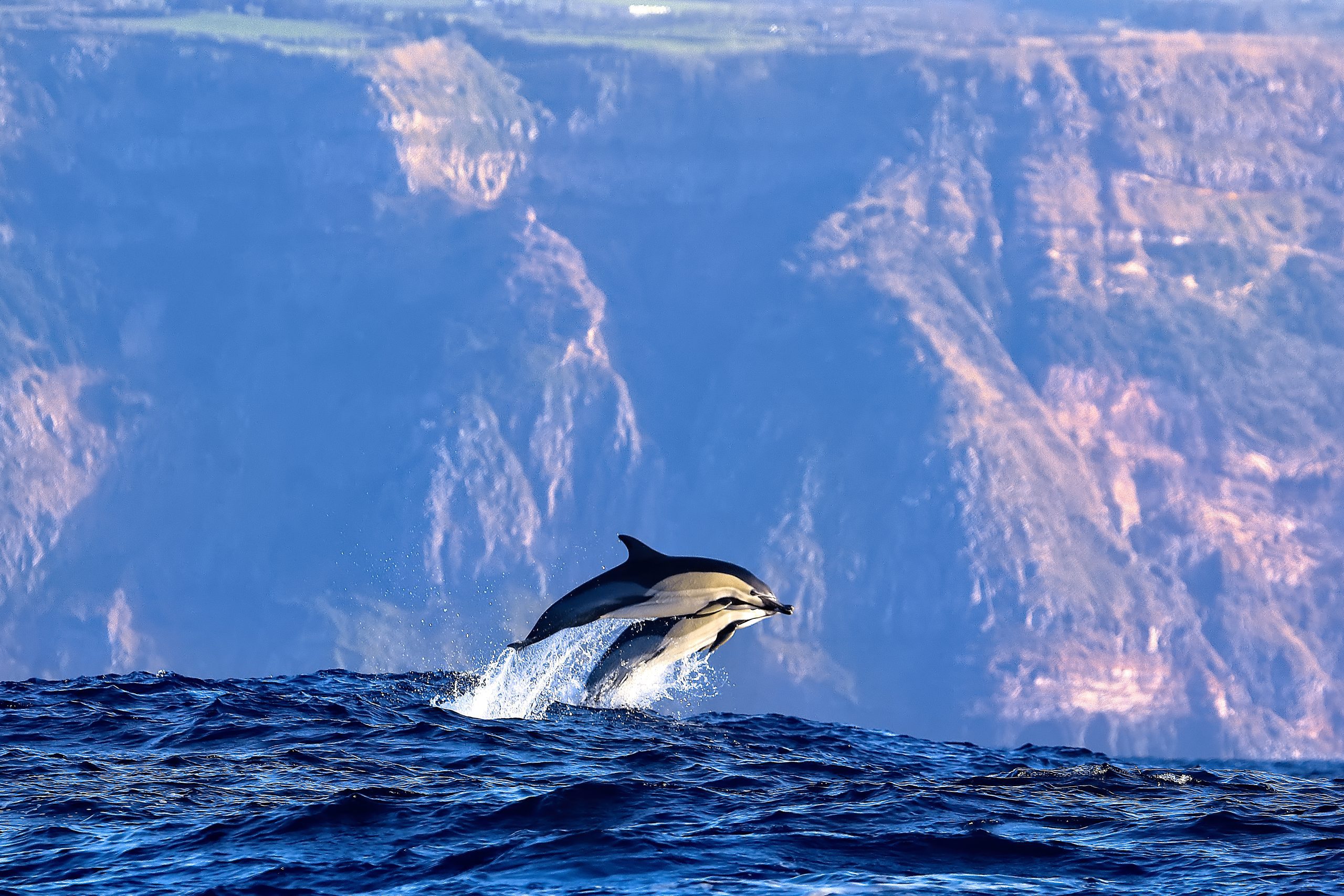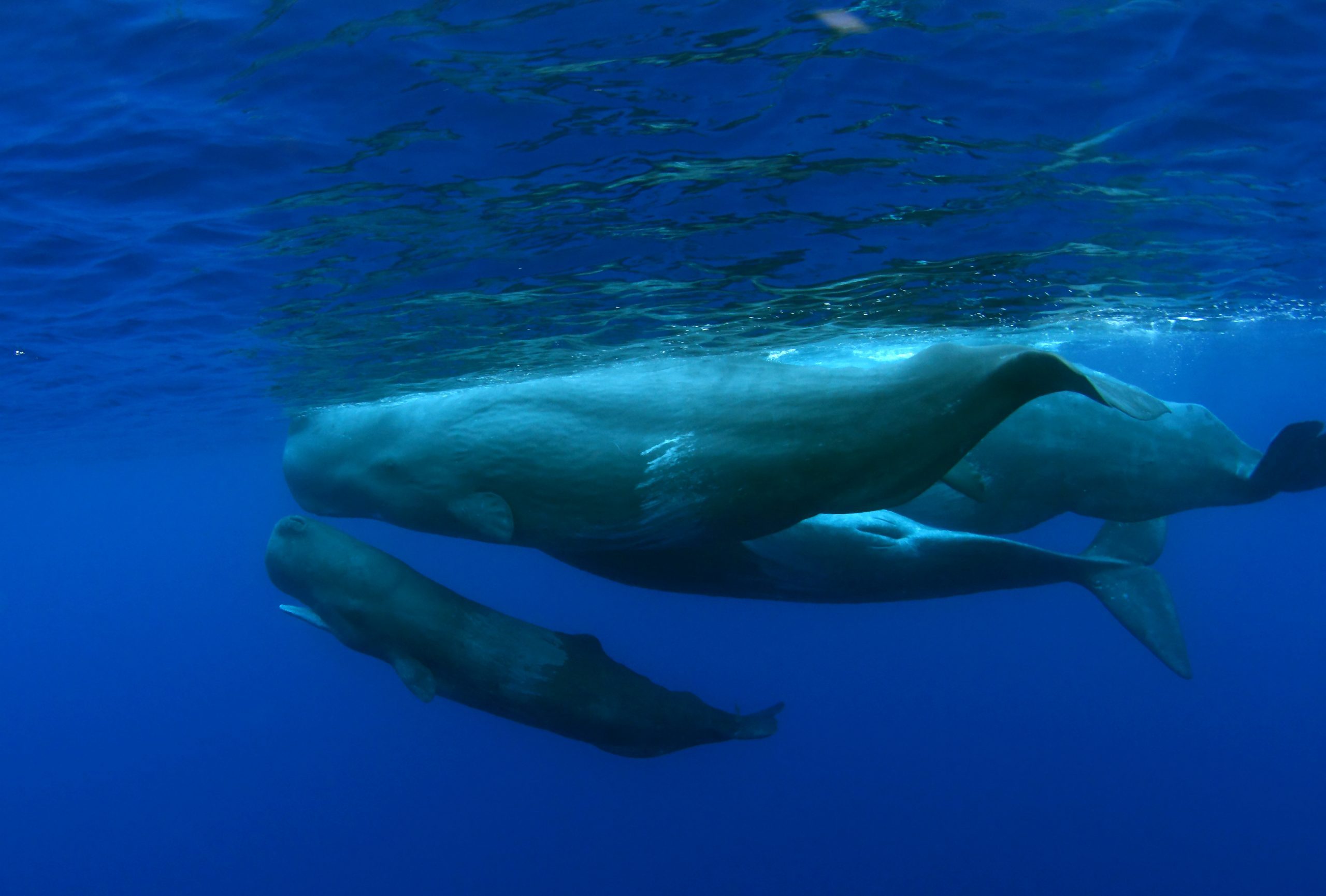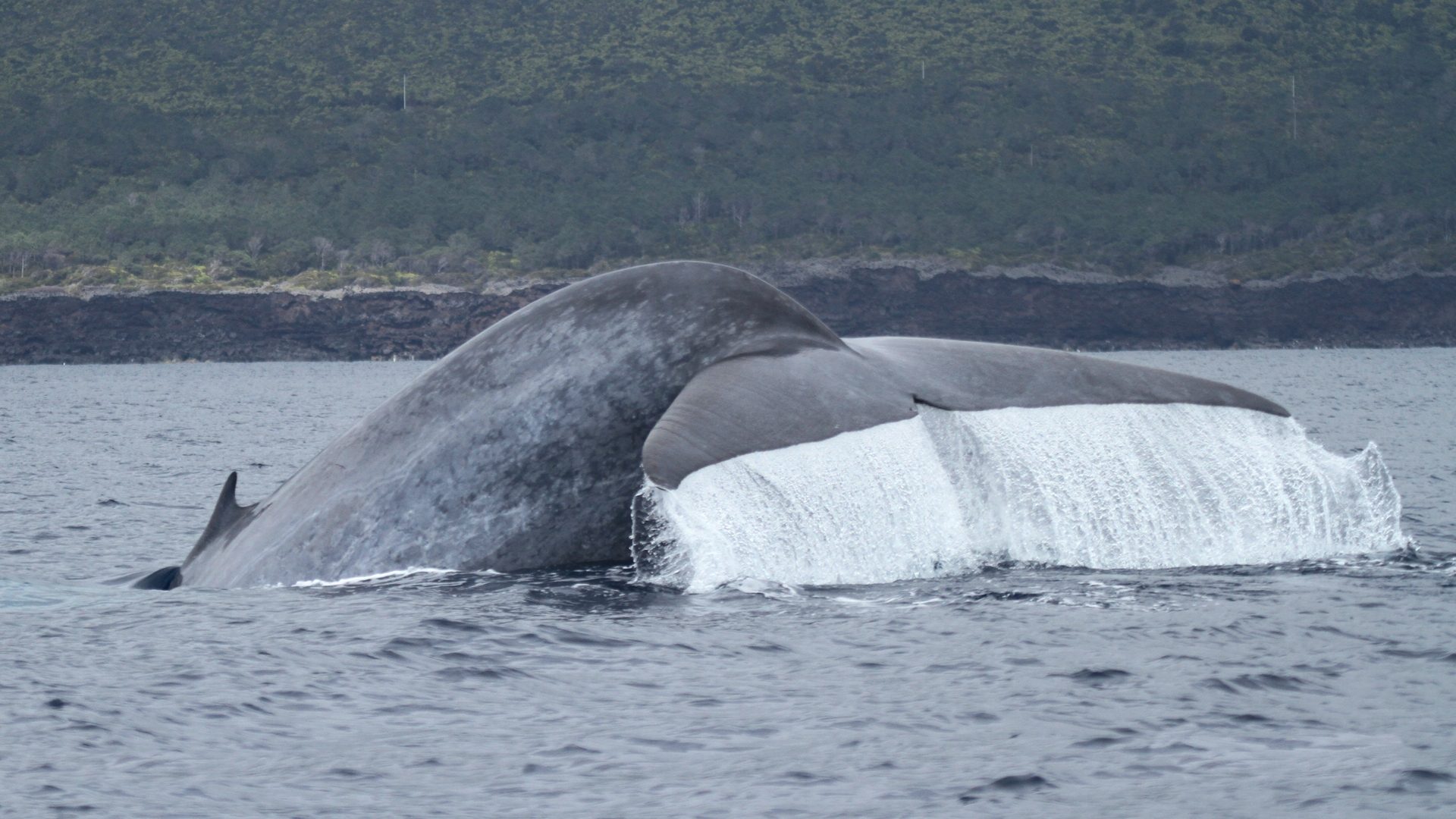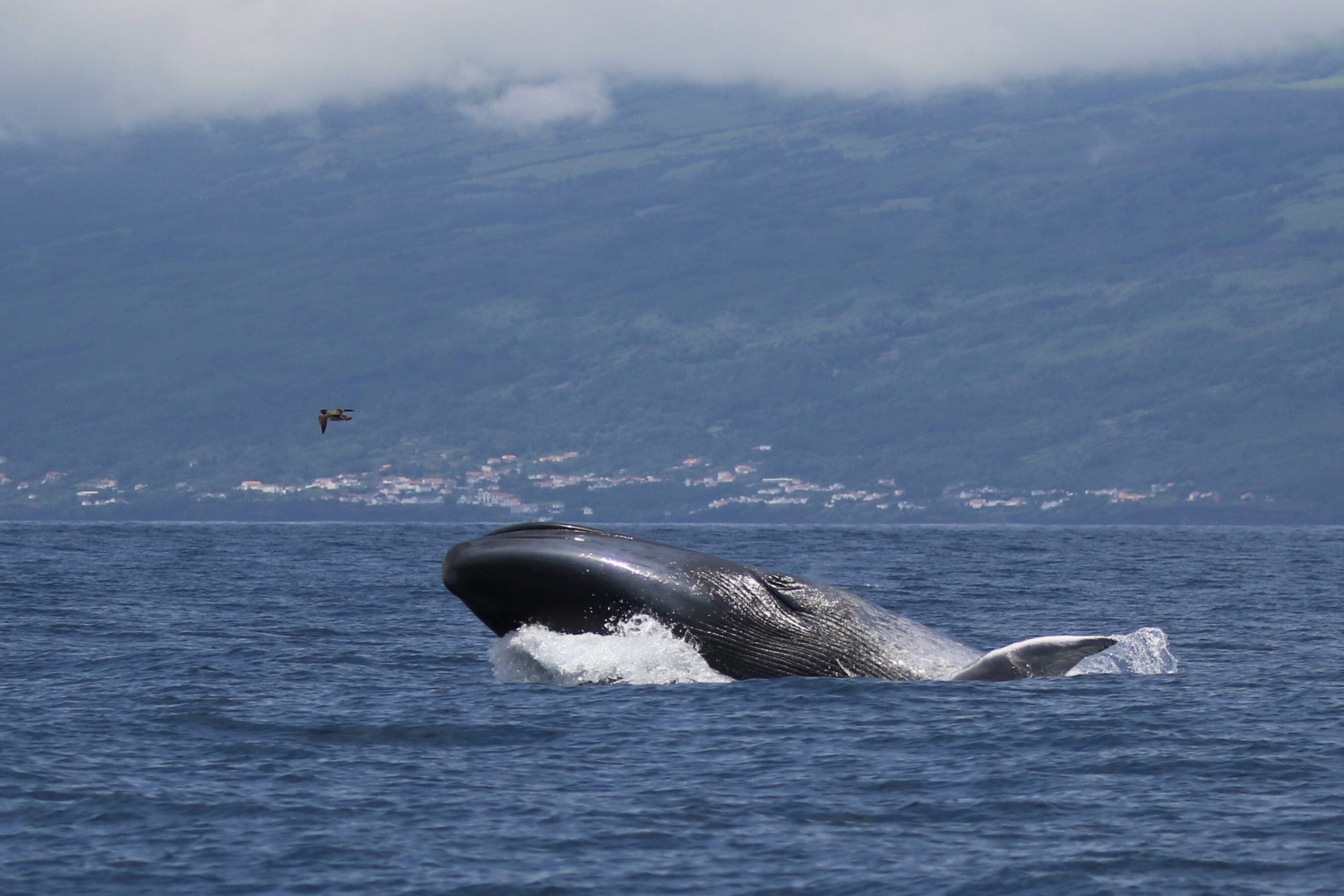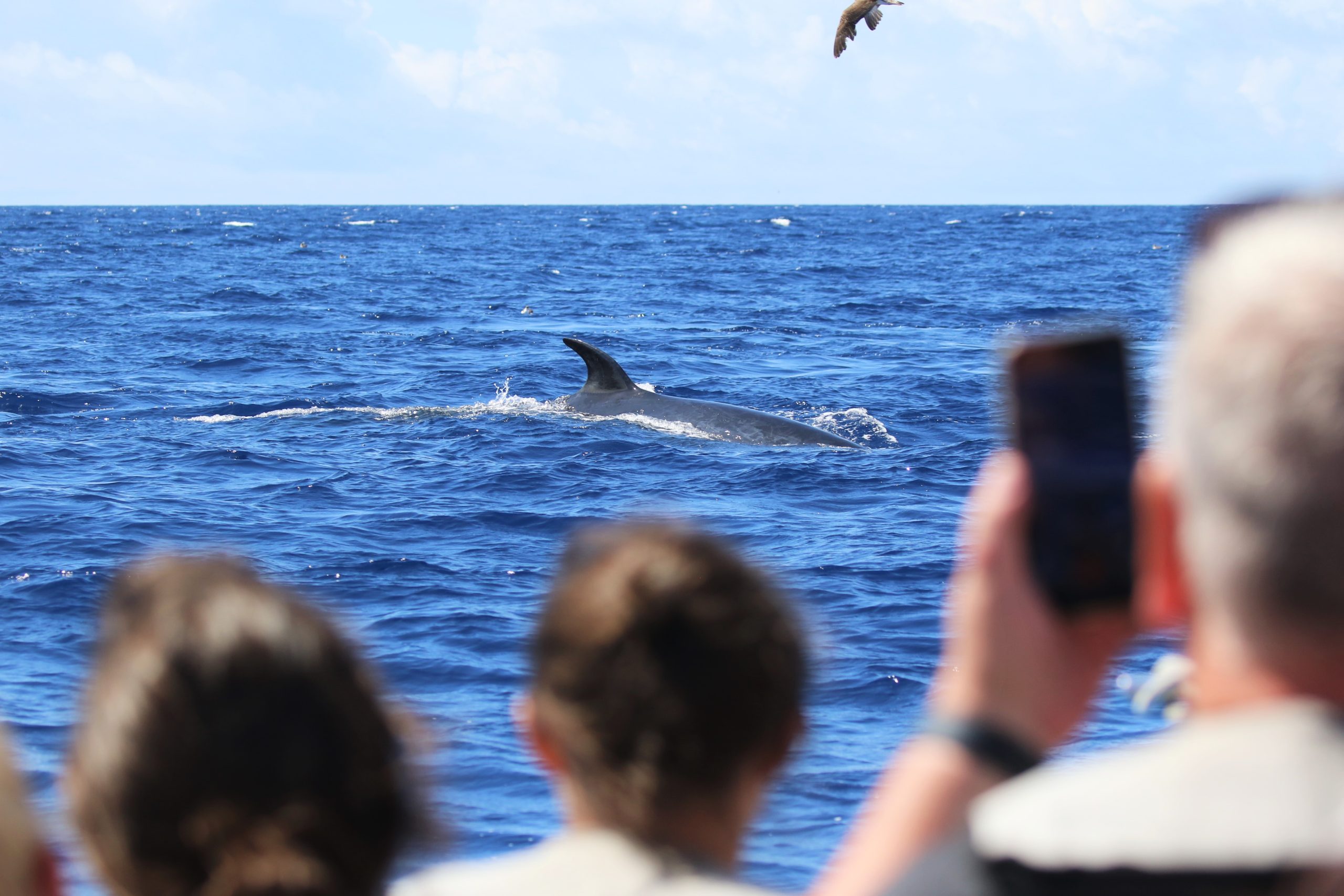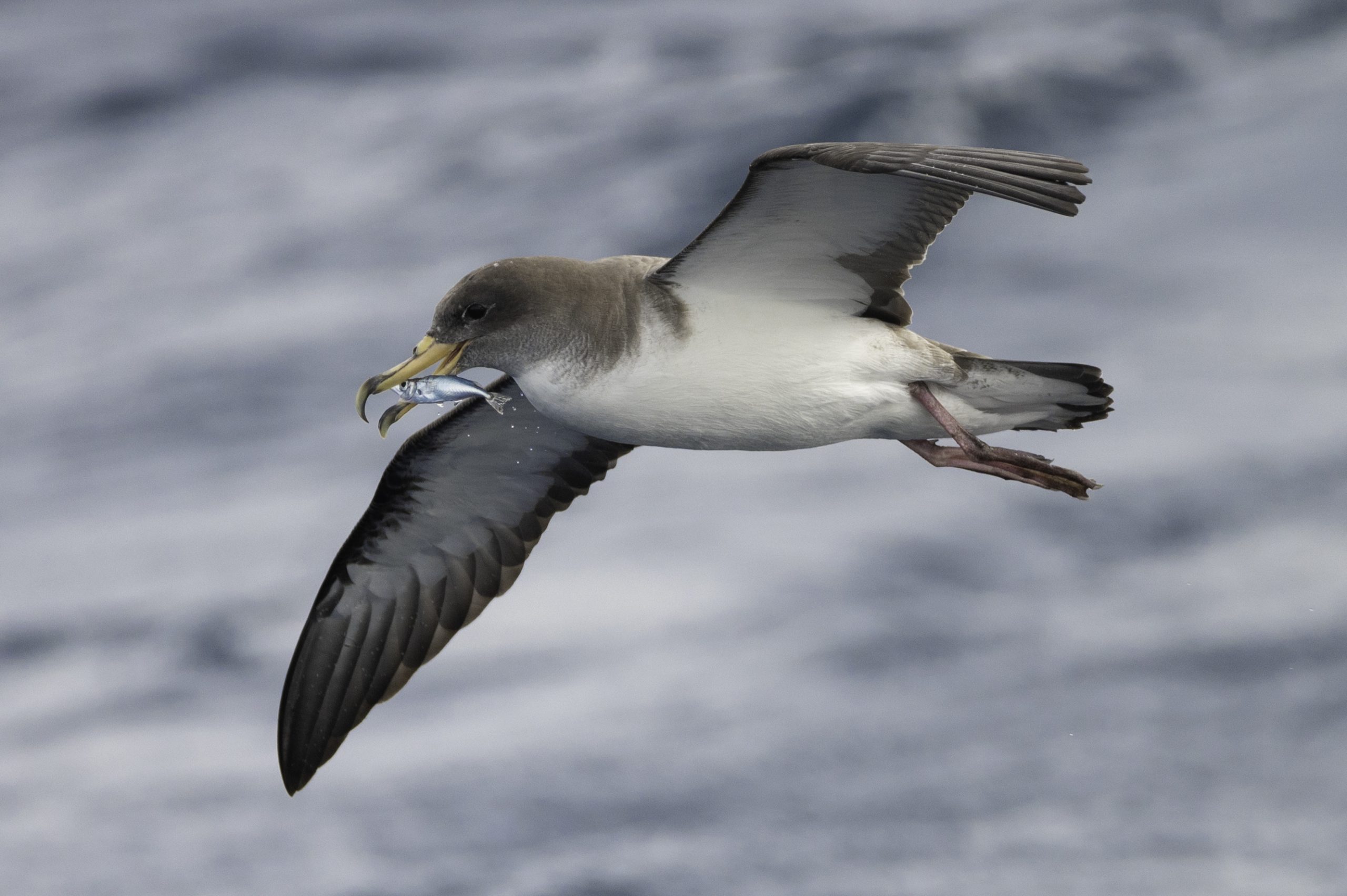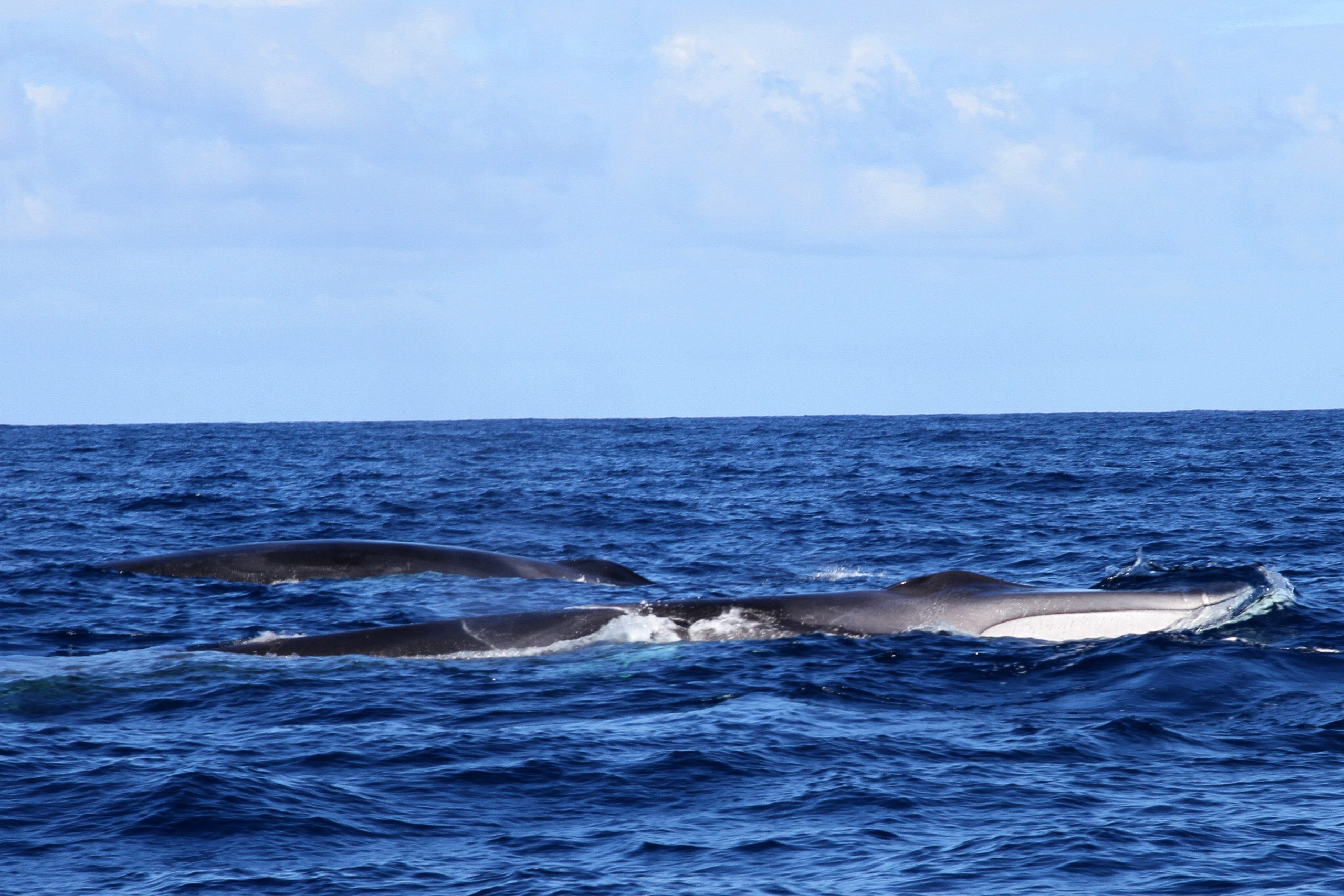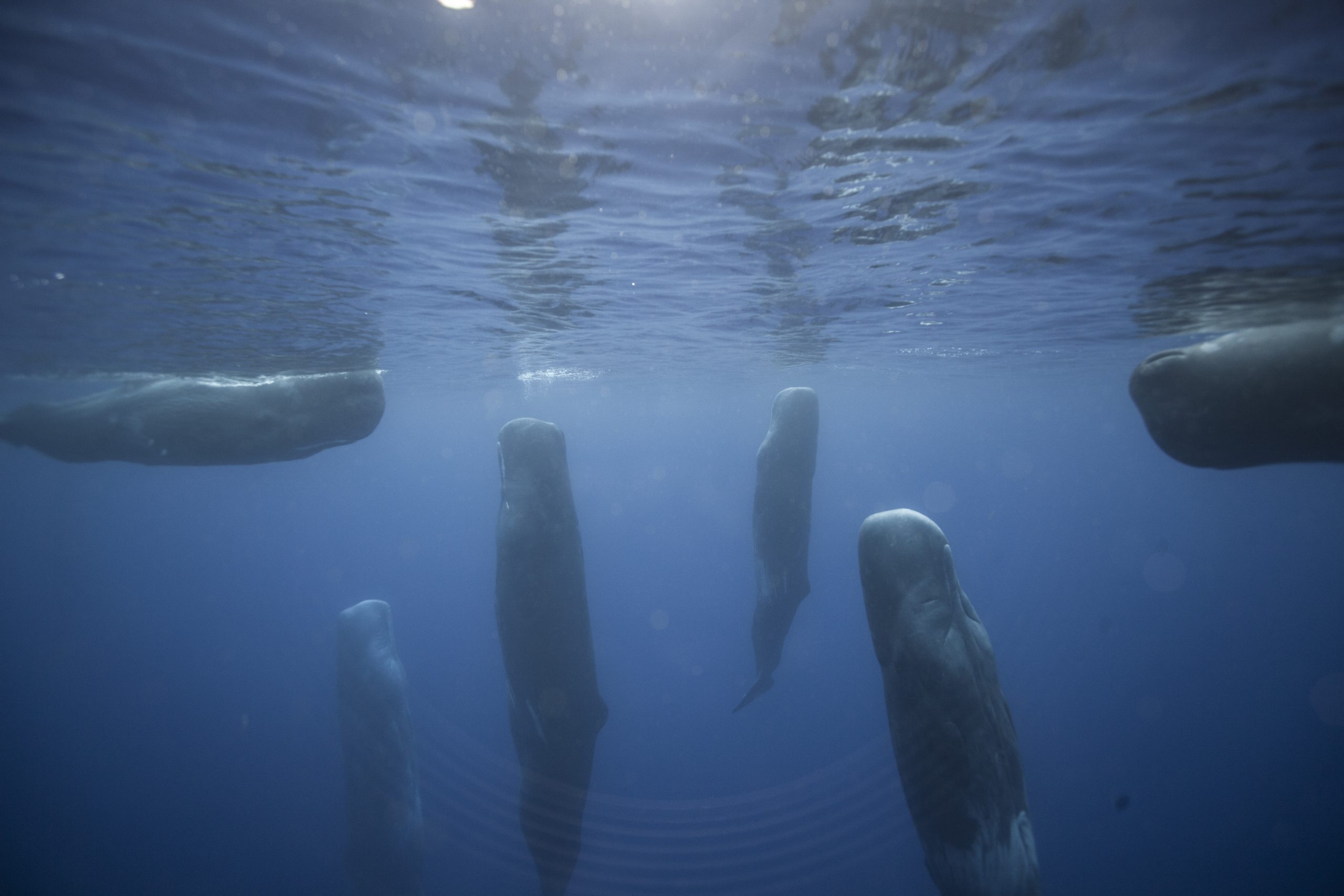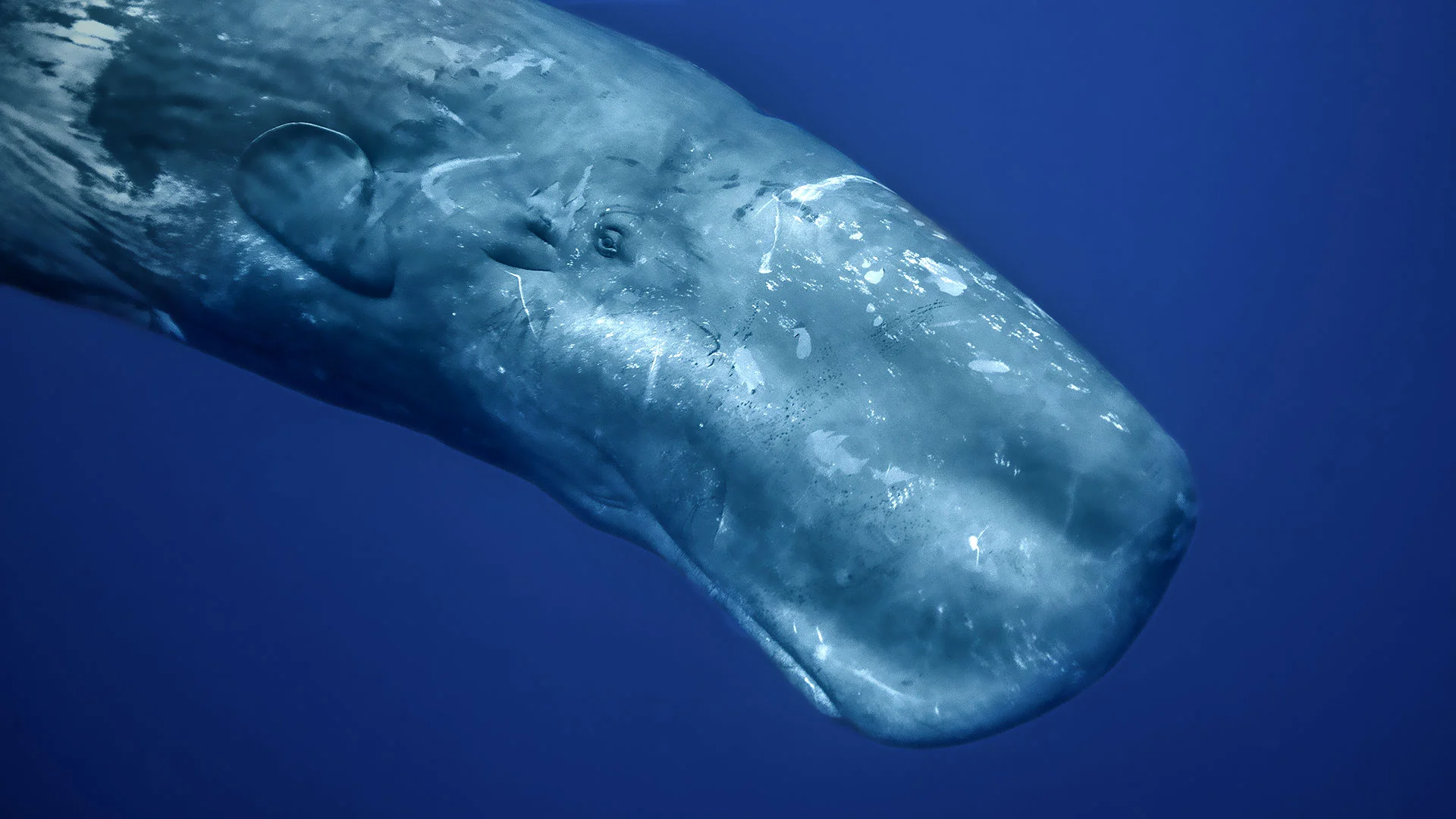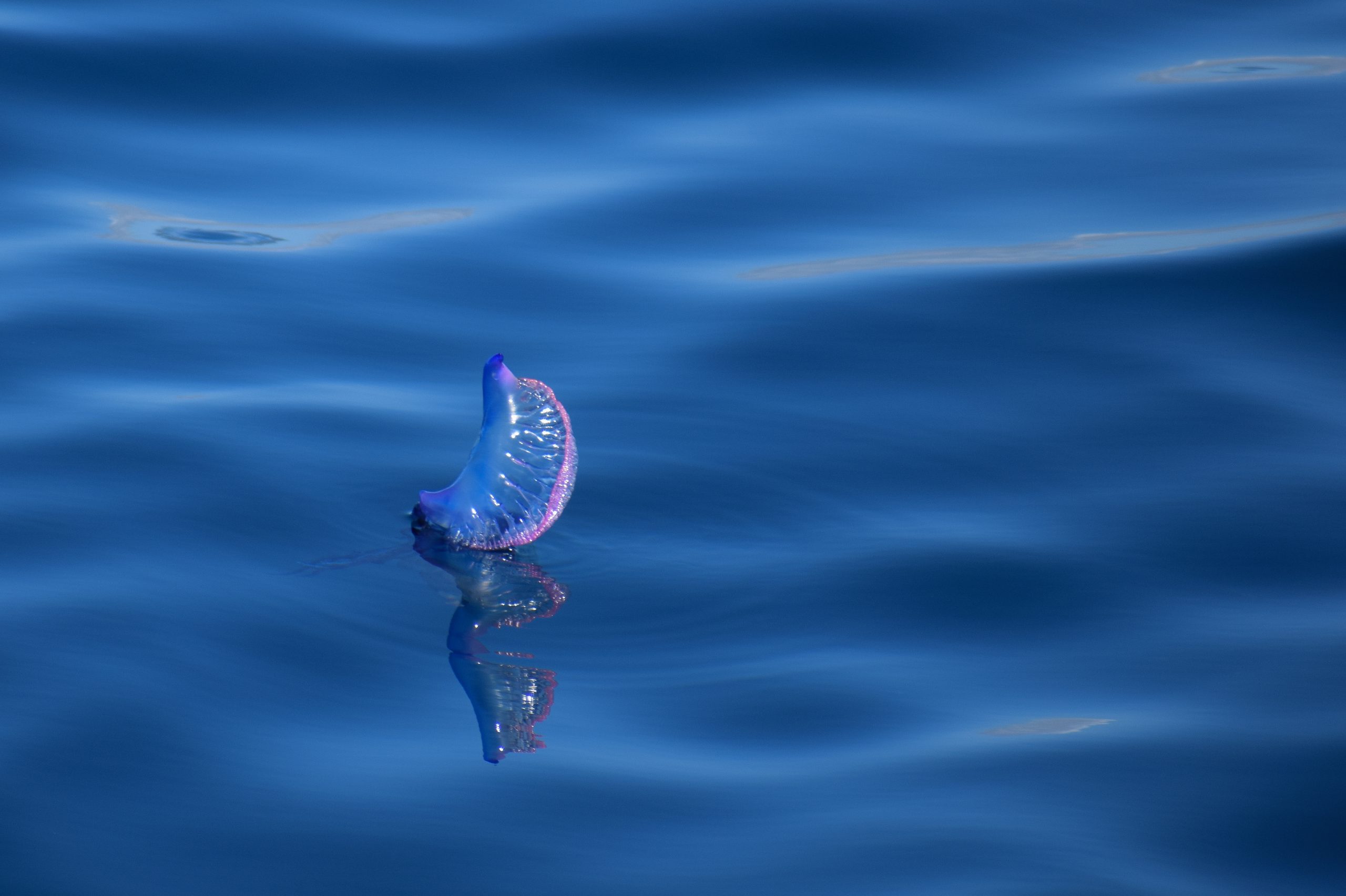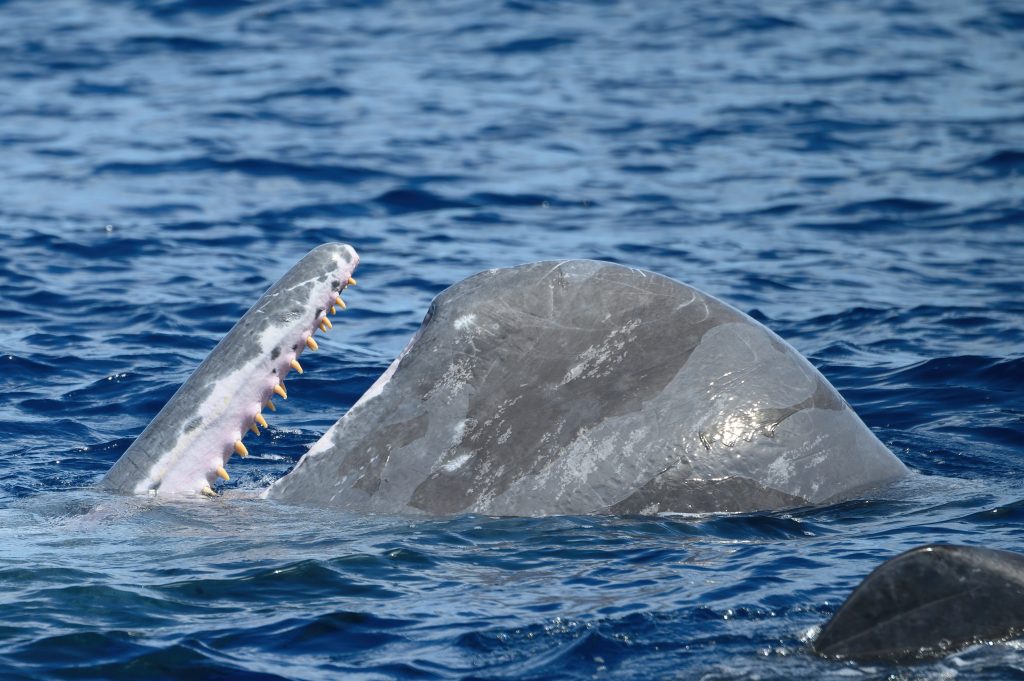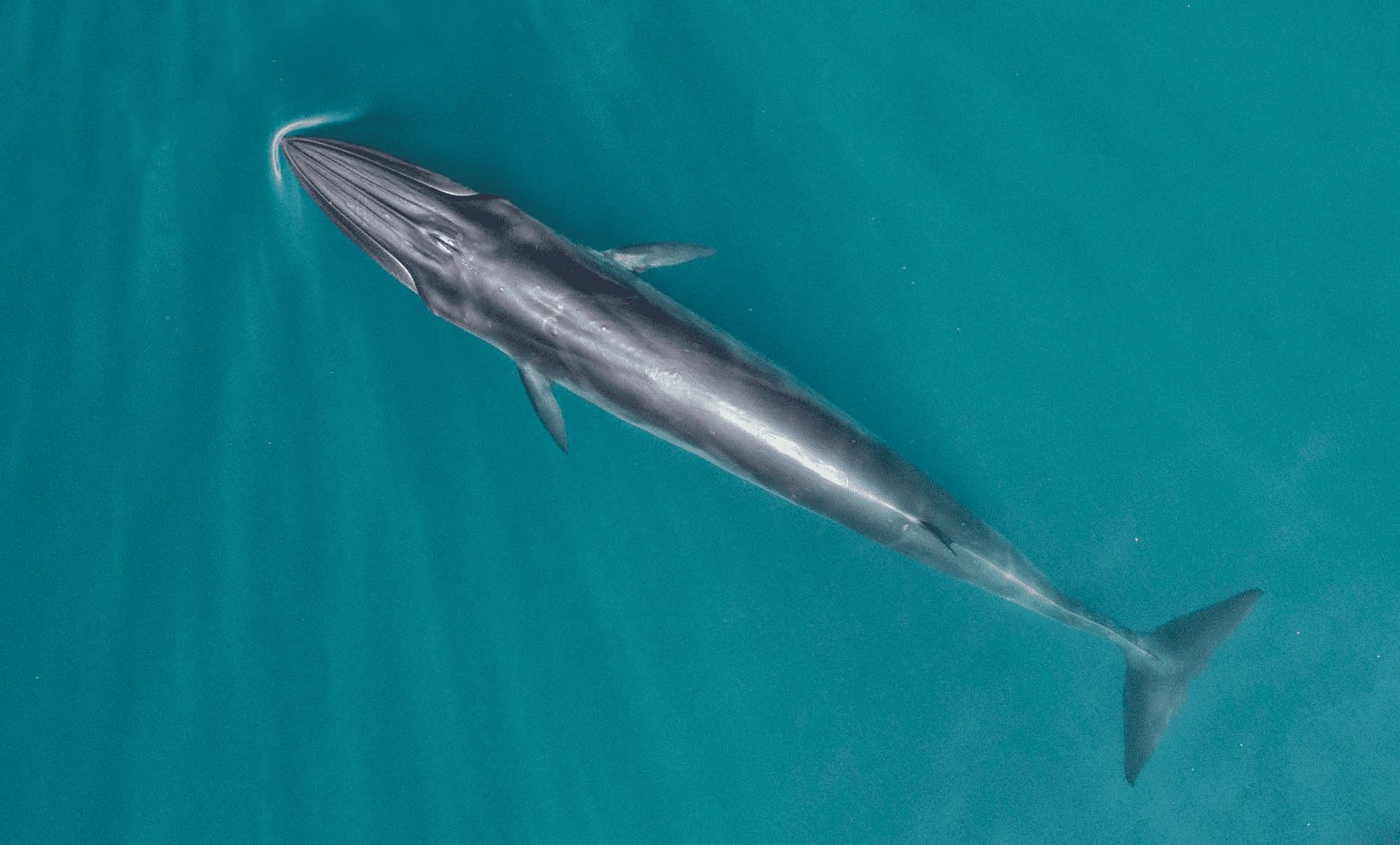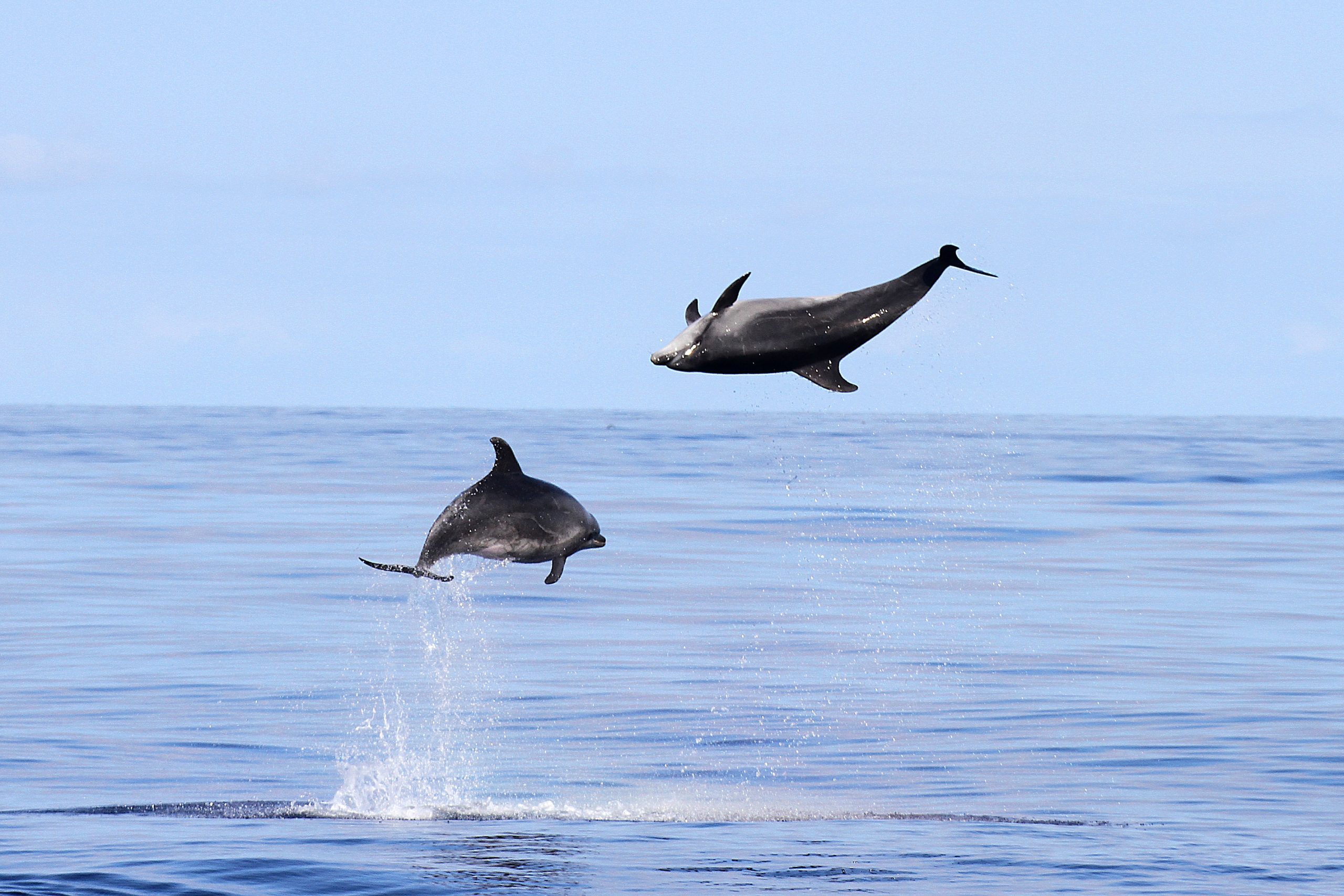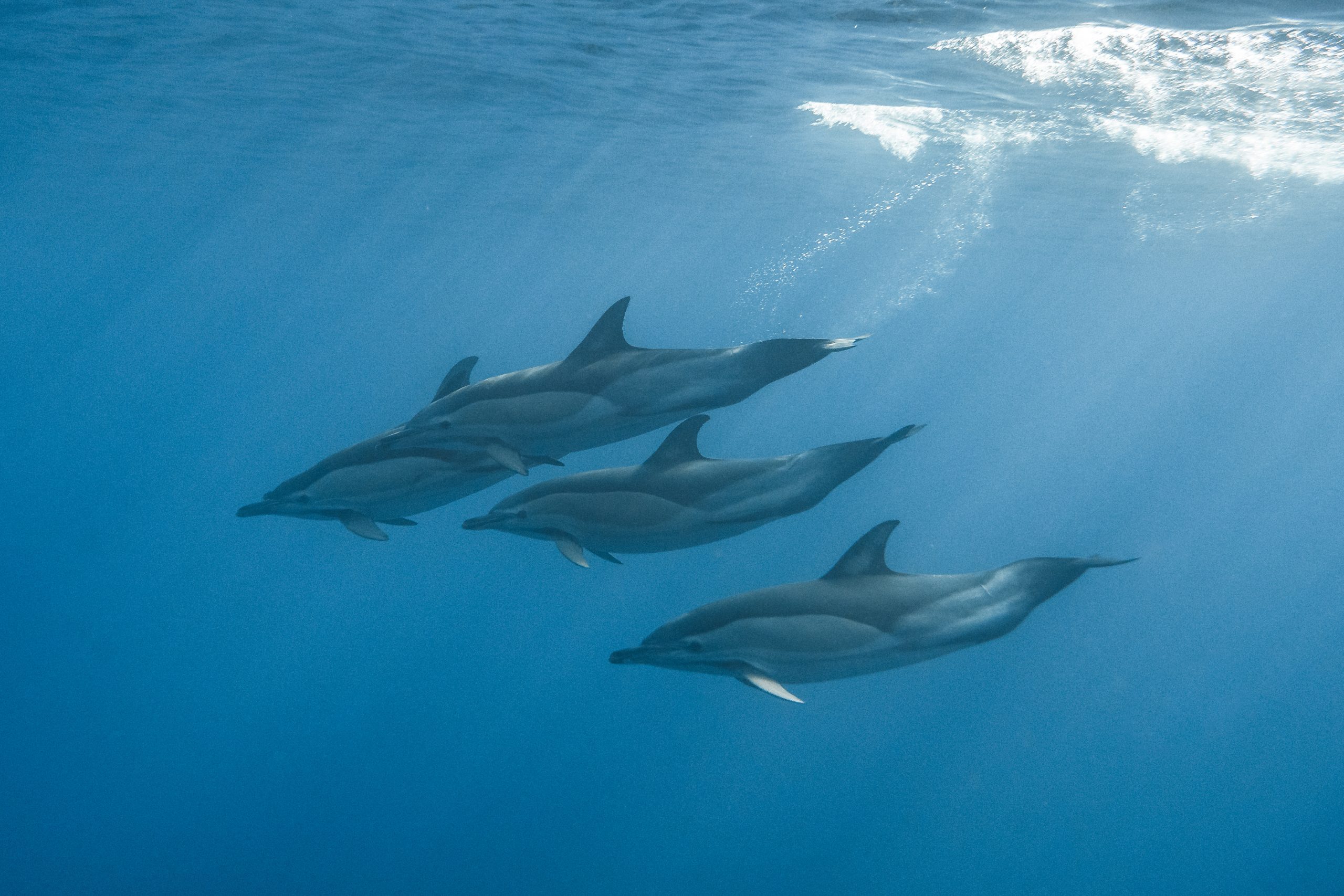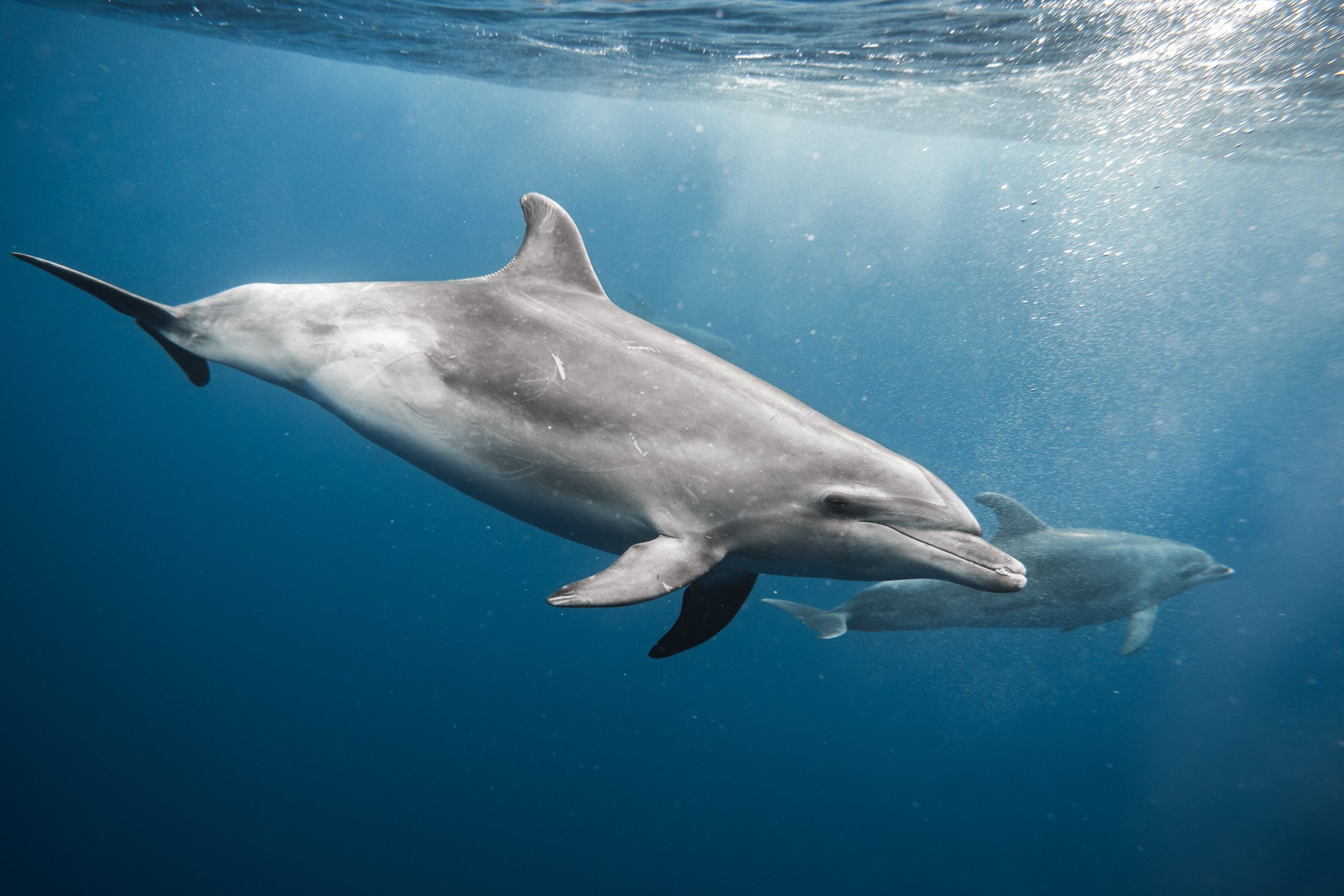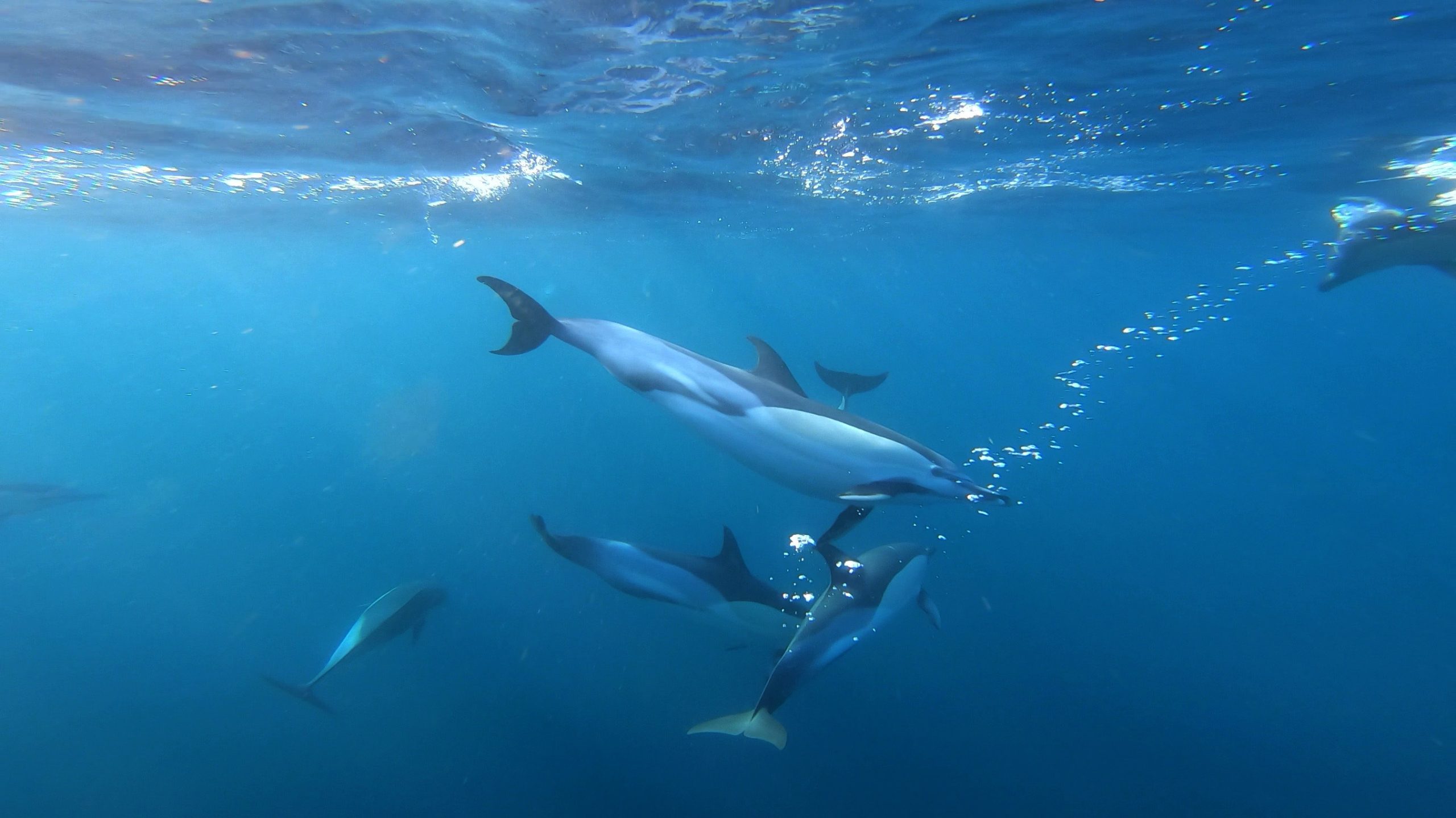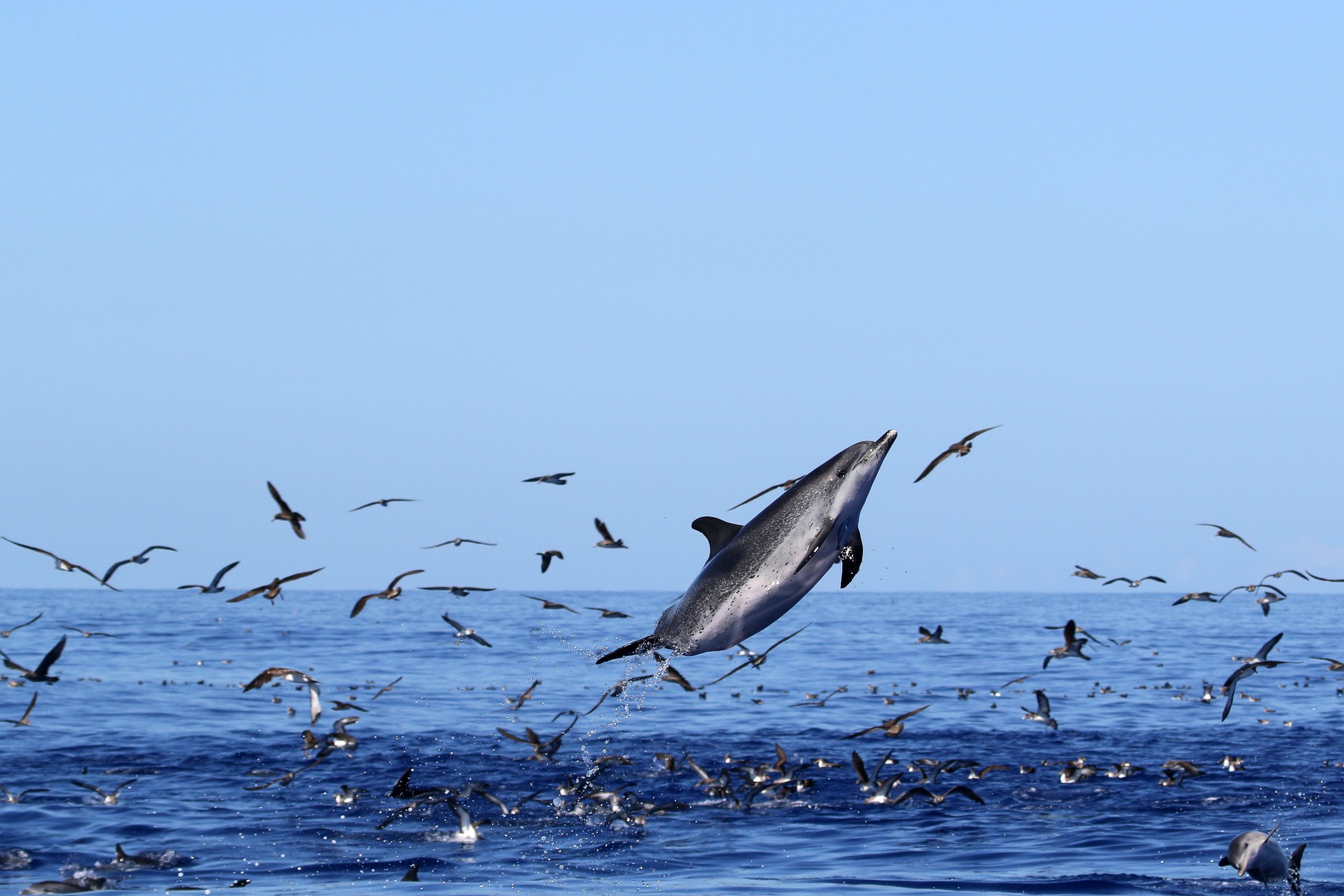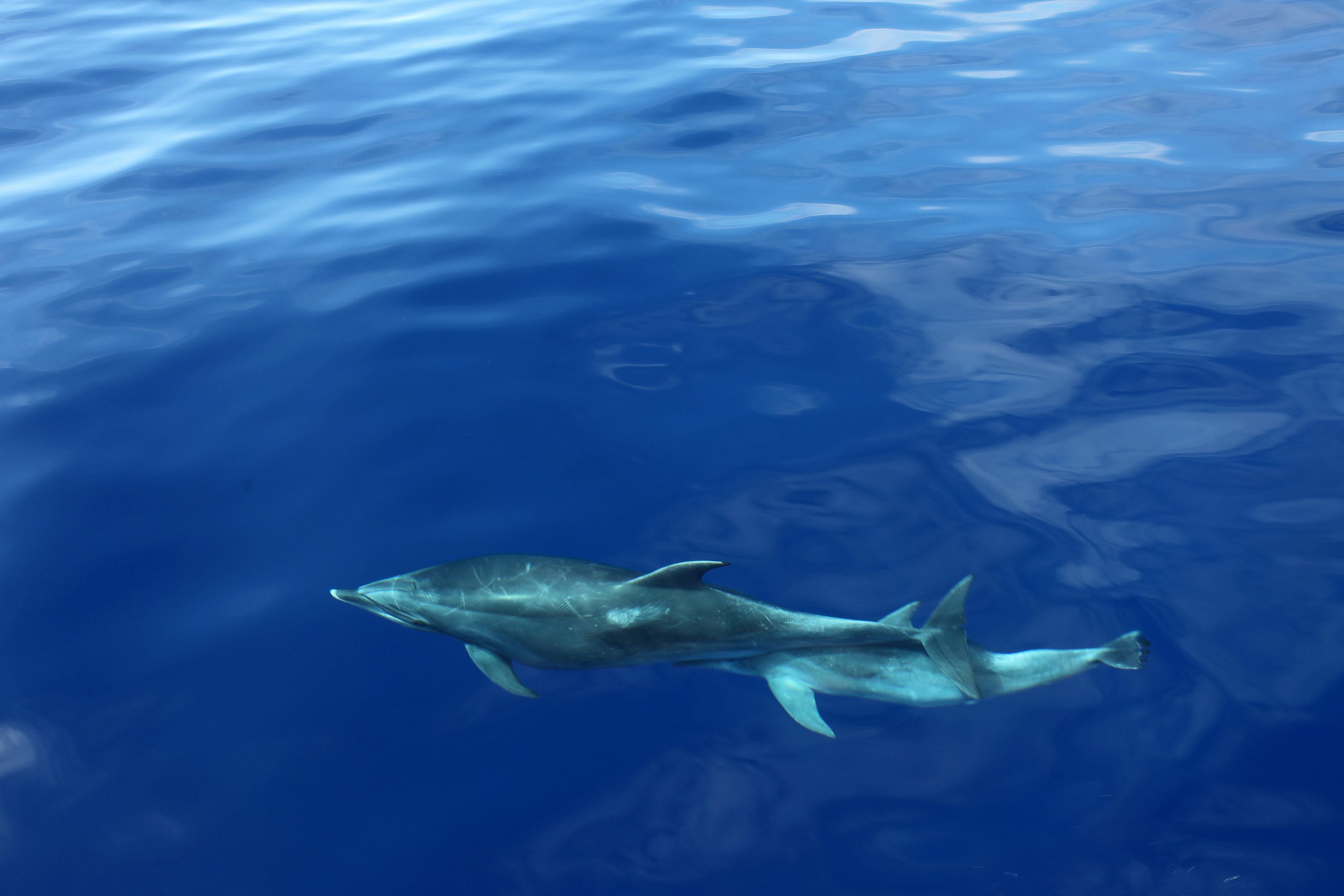Most of you have probably already seen dolphins, either in real life or on screen. Usually, they look more or less similar in shape and color, like “Flipper”, the dolphin from the famous TV series. However, at some point, you might stumble across the term “pink dolphin”, which sounds made up from a fairy tale. Can they even exist? And if yes, why are they pink? Or are they the unicorns of the sea?
So many questions — but don’t worry! In this article, we will answer all your questions about pink dolphins!

Not Every Dolphin is Equal
Difference Between Dolphins
In general, “dolphins” is a collective term for different families of cetaceans, or more precisely, different families of toothed whales. Researchers know five families: the large family of oceanic dolphins and four families of river dolphins, each containing only one member. To simplify, experts group these river dolphin families as true river dolphins. However, when talking about river dolphins, all species live in geographically separate systems and share similar looks due to evolved adaptation to estuaries and river environments.
Dolphin VS. River Dolphin
The ancestors of river dolphins were marine dolphins, too. However, river dolphins look quite different from their modern ocean relatives due to their thoroughly different lifestyles. Scientists discovered that river dolphins look more like their early marine ancestors than the current oceanic dolphins. They possess super slender, long, skinny beaks with numerous teeth, small eyes, and much more flexible necks and bodies. They pronounce their melons, which results in a more bulbous forehead. Additionally, they have larger flippers but undeveloped dorsal fins.
Unlike oceanic dolphins, river dolphins possess infused vertebrae in their necks, which allows them to turn their heads about 90 degrees. Furthermore, they can swim forward with one flipper and backward with the other at the same time, which offers much more precision between the roots of trees in the river bed. Additionally, echolocation facilitates the animals’ navigation through this tough environment.

✨ Related articles: Are Dolphins Endangered? | Are Pink Dolphins real? | Do Dolphins Eat Tuna? | Do Dolphins Smell? | Do Whales & Dolphins Lay Eggs?
River Dolphins
Distribution
River dolphins can be found in some freshwater rivers of northern South America. They are commonly observed throughout most of the Orinoco and Amazon River basins in Brazil, Bolivia, Colombia, Ecuador, Peru, Guyana, and Venezuela.
Here, we can find two of the four river dolphin species: the Tucuxi (Sotalia fluviatilis) and the Amazon River dolphin (Inia geoffrensis). The WWF suggests that the Amazon River dolphin has already evolved some subspecies, which are not yet recognized worldwide.

The two other species of river dolphins can be found in Asia’s freshwater rivers and brackish waters.
These species are the Irrawaddy dolphin (Orcaella brevirostris) and the South Asian River dolphin (Platanista gangetica). The latter is divided into two subspecies based on the rivers they live in: the Indus River dolphin and the Ganges River dolphin.
Another freshwater species you may encounter is the Yangtze finless porpoise. It shared waters with the Baiji dolphin, which became functionally extinct in 2006. However, porpoises are a different group of cetaceans, so we do not take them into account in this article about dolphins.
Threats and Conservation Status
Living close to urban areas, river dolphins face many threats. The main ones are dam construction and mercury contamination. They can also end up as by-catch or even be deliberately killed for bait.
There are five different species of river dolphins, with an estimated ten thousand. All river dolphins are currently classified as endangered, although data on them is sometimes deficient due to murky waters and their sometimes shy and elusive behaviors.
Different Pink Dolphin Species
Back to this mythical pink dolphin! The species, commonly known as the pink dolphin, has the scientific name Inia geoffrensis and indeed exists!
Inia geoffrensis is living in South America and becomes about 2.7 m long and can weigh up to 180 kg. They can reach an age of about 30 years in the wild. In general, the diet is very diverse and includes also piranhas.

✨ Related articles: How do Dolphins Mate? | How do Dolphins Sleep? | How do Whales & Dolphins Communicate? | How is a Group of Dolphins called? | Top-3 Facts & Curiosities about Dolphins | What Do Dolphins Eat?
Exceptions
Some individuals of a special Indo-Pacific humpback dolphin population are pink, too. They live in the coastal waters of Asia and are mostly gray and white, but a certain pod around Hong Kong evolved a pink color. However, this is an exceptional group that is not commonly named pink dolphins worldwide.
Furthermore, there is a unique pink albino bottlenose dolphin called “Pinky” in Louisiana. Here, a genetic variation causes pink skin color. As it is only one individual, this dolphin is sometimes locally referred to as the pink dolphin but not commonly known under the term pink dolphin. Pinky gave birth to another pink dolphin calf a few years ago, and they are now two in this pod.

Amazon River Dolphin – The Real Pink One
The Myth of the Pink Dolphin
People commonly refer to the Amazon River dolphin, Inia geoffrensis, as the pink dolphin. It represents one of two endangered freshwater species in the same rivers. Unlike other dolphin species, these dolphins often swim alone or in small groups.
The pink dolphin became an outstanding mythical figure in the South American culture, which is revered and reviled in equal measure. Typically, the pink dolphin mythos is referred to as “Boto encantado” (= “enchanted porpoise / pink river dolphin”). The “Boto encantado” tale describes how these dolphins morph into handsome men and come ashore with a hat to hide their blowholes. Further, people consider them guardians of the manatees (sea cows). And if this is not enough, another story tells that if you went swimming alone in the river from dusk until dawn, the “Botos” would whisk you away to a magical underwater city like Atlantis. How amazing would this be?!
Moreover, rumors say that harming these semi-magical creatures brings bad luck and eating them even worse! Some of these fairytales may sound funny, but they contributed to conserving these wonderful and highly intelligent creatures, which have up to 40% more brain capacity than humans.

Why is it pink?
However, the Amazon River dolphin does not always display a bright pink color. During their life history, these dolphins change their colors! They are born gray and turn pink with increasing age. Moreover, males are much more intensive pink than females. Their color can vary from some pink spots to all-over flamingo pink.
Similar to our local Risso dolphins, the males of the Amazon River dolphins have a distinct color. Both species are well-known for rough games and fights, which result in scar tissue with these certain colorations. Furthermore, behavior, capillary placement, diet, and sun exposure strongly influence the final color of Inia geoffrensis.
Additionally, observations indicated that a brighter pink attracts more females. This makes sense if you consider that pinker males most likely had more successful fights and, thus, seemed to pass on stronger genes. A fun fact regarding the pink color of the Amazon River dolphins is that excited dolphins can flush in a brighter pink – just like humans!

Conclusion
In conclusion, pink dolphins are a figment of imagination and a real and fascinating part of our natural world. From the enchanting Amazon River dolphin to the unique Indo-Pacific humpback dolphin, these creatures captivate us with their beauty and mystery. Understanding their unique traits and the myths surrounding them enriches our knowledge and highlights the importance of conserving these incredible animals.
So next time you hear about pink dolphins, remember they are the real unicorns of the sea, deserving of our admiration and protection.
Bibliography
- Cravalho, M. A. (1999). Shameless creatures: an ethnozoology of the Amazon River dolphin. Ethnology, 47-58.
- Gómez-Salazar, C., Whitehead, H., & Trujillo, F. (2011). Population size estimates of pink river dolphins (Inia geoffrensis) using mark-recapture methods on photo-identification. Latin American Journal of Aquatic Mammals, 9(2), 132-139.
- Gomez‐Salazar, C., Trujillo, F., & Whitehead, H. (2012). Ecological factors influencing group sizes of river dolphins (Inia geoffrensis and Sotalia fluviatilis). Marine Mammal Science, 28(2), E124-E142.
- Hollatz, C., Vilaca, S. T., Redondo, R. A., Marmontel, M., Baker, C. S., & Santos, F. R. (2011). The Amazon River system as an ecological barrier driving genetic differentiation of the pink dolphin (Inia geoffrensis). Biological Journal of the Linnean Society, 102(4), 812-827.
- Martin, A. R., & Da Silva, V. M. F. (2004). River dolphins and flooded forest: seasonal habitat use and sexual segregation of botos (Inia geoffrensis) in an extreme cetacean environment. Journal of zoology, 263(3), 295-305.
- Martin, A. R., & Da Silva, V. M. F. (2006). Sexual dimorphism and body scarring in the boto (Amazon river dolphin) Inia geoffrensis. Marine Mammal Science, 22(1), 25-33.
- May-Collado, L. J., & Wartzok, D. (2007). The freshwater dolphin Inia geoffrensis geoffrensis produces high frequency whistles. The Journal of the Acoustical Society of America, 121(2), 1203-1212.
- McGuire, T. L., & Winemiller, K. O. (1998). Occurrence Patterns, Habitat Associations, and Potential Prey of the River Dolphin, Inia geoffrensis, in the Cinaruco River, Venezuela 1. Biotropica, 30(4), 625-638.
- McGuire, T. L., & Aliaga‐Rossel, E. R. (2007). Seasonality of Reproduction in Amazon River Dolphins (Inia geoffrensis) in Three Major River Basins of South America 1. Biotropica, 39(1), 129-135.
- Mintzer, V. J., Martin, A. R., da Silva, V. M., Barbour, A. B., Lorenzen, K., & Frazer, T. K. (2013). Effect of illegal harvest on apparent survival of Amazon River dolphins (Inia geoffrensis). Biological Conservation, 158, 280-286.
- Vidal, O., Barlow, J., Hurtado, L. A., Torre, J., Cendón, P., & Ojeda, Z. (1997). Distribution and abundance of the Amazon River Dolphin (Inia geoffrensis) and the tucuxi (Sotalia fluviatilis) in the upper Amazon River. Marine Mammal Science, 13(3), 427-445.



